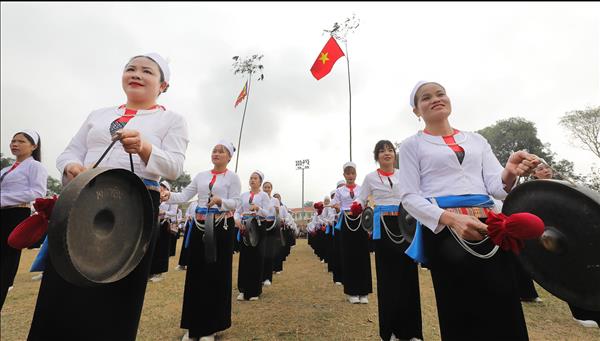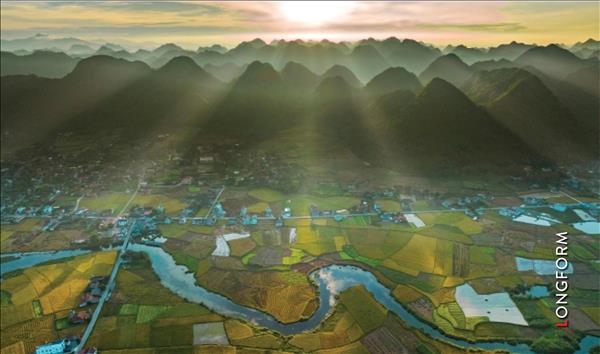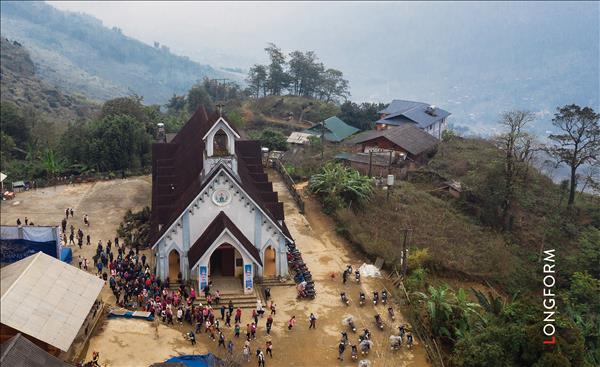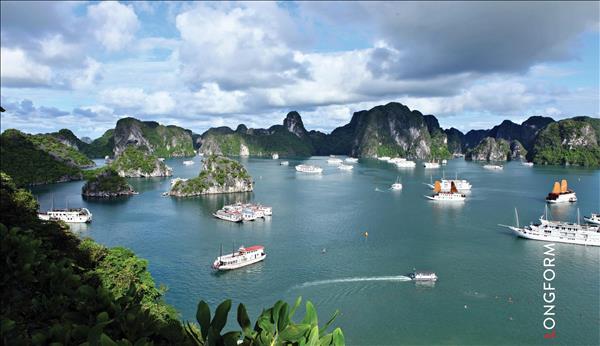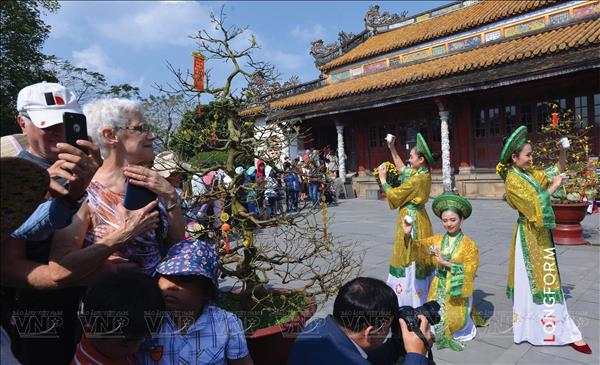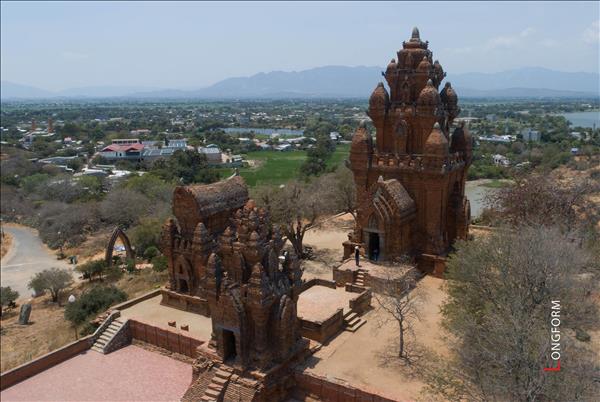Exploring the beauty of Cat Ba “jade” islands
In late June 2015, we joined a group of young people from Hanoi to visit Cat Ba Archipelago in Cat Hai District of northern Hai Phong. Our first destination was the Little Cat Ba Eco-Tourism Resort located inside the Nuoc Trong (transparent water) Bay. Covering an area of 2,000m2 and having a cool, clement climate, the resort attracts many tourists to stop over for convalescence or during their trip to explore the Cat Ba islands and sea.
Nguyen Thanh Hai, Director of the Little Cat Ba Resort, advised us to take the tour to “Lan Ha Bay, Viet Hai Ancient Village, and Cat Dua Island”, the most interesting trip on the Cat Ba islands.
We took a boat from Cai Beo station to Lan Ha Bay. Located in the east of Cat Ba Archipelago, Lan Ha Bay comprises a series of islands, which form 139 beaches with blue, clear water. To fully enjoy the beauty of the bay, we used kayaks to cruise, seeing the coral reefs at Van Boi and Van Ha beaches, and exploring the secret of the Vem, Ham Rong and Do Cung caves and grottoes. We felt great when breathing the wholesome, cool air from the sea.
On the way to Lan Ha Bay, we saw on the mountain slopes some foreign climbers trying to get to the top of the rugged cliffs. According to Vu Tien Lap, head of the Cat Hai District’s Culture-Tourism Department, the local authorities had set up nine routes for mountain climbers, of which the most loved one is that to Tien Ong (Male Deity) Island due to its beautiful stalactites.
Our next stop-over was the Viet Hai ancient village, an eco-tourism spot which has attracted many visitors in recent years. The village has only 90 households who live in the old houses built in a valley and surrounded by mountains and jungles.
The local friendly villagers, who are also tour guides, accompanied us to visit their old houses, showing us how they grow rice and vegetables. We had a feeling we were in an ancient village with the daily activities of the residents living in the northern Red River Delta.
The last leg of our tour was Cat Dua Island, where we understood the reason why it is also called the “Monkey” Island. There, visitors can play or take photos with the friendly, yet very playful, monkeys. On the island, there is a beach with a radius of around 3km, with white and soft sand, stretching far and sloping gently. We walked along the beach to enjoy the sunshine and cool wind, while sometimes picking up some special shells. It was truly a fantastic experience!
We returned to Cai Beo station in late afternoon the same day and went to the Cannon Fortress Relic located 177m above sea level. The fortress was built in 1942 at a strategic gate to the East Sea, which is historical proof of Cat Ba district islanders to be responsible for their task of defending the sea outpost of the homeland.
From the fortress base, we could fully contemplate the wild natural scenery of Cat Ba islands in the afternoon when the golden sun slowly set and could be seen through the mountain tops. The panoramic view of Cat Ba Islands was romantic and picturesque with the fishing boats anchored at the stations, the floating restaurants on the sea and resorts on the mainland brilliantly lit up, like sparkling stars over the sea.
In the evening, Cat Ba was crowded with visitors. The tram cars carried tourists to go sight-seeing or souvenir shopping. At the beach, camp fires were set up here and there, surrounded by groups of tourists who enjoyed outdoor dinner buffets.
Trinh Quoc Trung, a member of our group who works for the FPT Global Technology Creation Company, said that he enjoyed the first day of the tour so much. “This is the first time I visited Cat Ba Island. I love its beautiful beaches and local delicious sea food. I am looking forward to the second day of our trip to visit Cat Ba National Park where the highly endangered white-head langurs are living,” he said.
Cat Ba National Park, a miracle attraction
The next morning, we took a bus to visit Cat Ba National Park which is at the foot of the curving mountain passes. On the way we could see magnificent, beautiful scenery. When we arrived at the park, under the thick canopy of the jungle with trees of hundreds of years old, we had a feeling of entering a strange bio-diversity world.
The park has many old trees with their big and strong roots, and rare herbal plants. On the ground there are mountain crabs, forest ‘sweet’ snails and geckos. Not only could we explore the park’s rich, diverse fauna and flora, we could also listen to the echoes of the forests with the cries of animals, singing of the birds, and the rustling leaves.
Kim Anh, a tour guide of Cat Ba National Park, explained to us that due to the process of geographical tectonics and sea encroachment about ten thousand years ago, the forests in Cat Ba Island are tropically humid on the limestone foundations. Cat Ba National Park is a combination of the ground forest ecological system, the coastal mangrove forests, and the onshore coral reefs.
On the tour about 2.5km long, we met many foreign tourists who showed great interest in spending time on the rugged, curving spots in Cat Ba National Park. David Butlin, a British tourist, said he loved the natural wild beauty of the mountains, particularly the experience when he climbed to the top of Ngu Lam Mountain, from where he could see the panoramic view of magnificent mountains and forests.
Winding along a narrow lane in the park, the bus took us to Trung Trang Cave. In the dim light from the lamps hung in the cave, however we still contemplated the majestic beauty of the sparkling stalactites, some of which looked like gold and silver pillars described in the tale about the Goddess of Trung Trang Cave. The cave, about 300m long running through a mountain, is naturally formed through thousands of years of geographical tectonics. Inside the cave is truly an eco-world, home to many creatures such as the bats, birds, insects, and reptiles.
It is located close to Ha Long Bay, another UNESCO-recognised Natural Heritage in northern Quang Ninh province, but Cat Ba archipelago has its own unique values in terms of bio-diversity and the combined forest-sea tourism model. If the Tonkin Gulf is said to be a Fairy in the Pacific Ocean, then Cat Ba Archipelago is a chain of jade islands which embellishes that Fairy.
We were told that the leaders of Hai Phong are trying to finalise the necessary procedures to submit them to UNESCO to review the recognition of Cat Ba Archipelago as a world natural heritage in the near future.
In late June 2015, we joined a group of young people from Hanoi to visit Cat Ba Archipelago in Cat Hai District of northern Hai Phong. Our first destination was the Little Cat Ba Eco-Tourism Resort located inside the Nuoc Trong (transparent water) Bay. Covering an area of 2,000m2 and having a cool, clement climate, the resort attracts many tourists to stop over for convalescence or during their trip to explore the Cat Ba islands and sea.
Nguyen Thanh Hai, Director of the Little Cat Ba Resort, advised us to take the tour to “Lan Ha Bay, Viet Hai Ancient Village, and Cat Dua Island”, the most interesting trip on the Cat Ba islands.
We took a boat from Cai Beo station to Lan Ha Bay. Located in the east of Cat Ba Archipelago, Lan Ha Bay comprises a series of islands, which form 139 beaches with blue, clear water. To fully enjoy the beauty of the bay, we used kayaks to cruise, seeing the coral reefs at Van Boi and Van Ha beaches, and exploring the secret of the Vem, Ham Rong and Do Cung caves and grottoes. We felt great when breathing the wholesome, cool air from the sea.
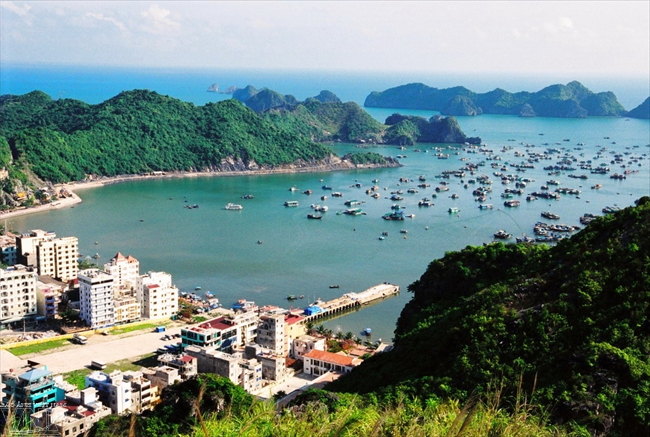 Cat Ba seen from the Cannon Fortress Relic located 177m above sea level. Photo: Nguyen Thang/VNP 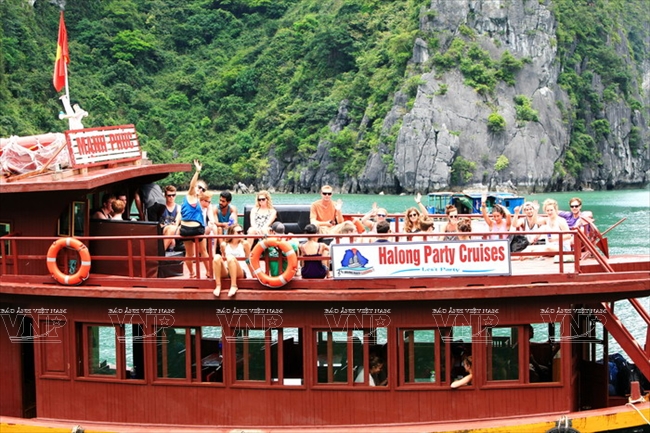 Foreign tourists enjoy seeing Cat Ba Island by cruise ship. Photo: Tran Thanh Giang/VNP 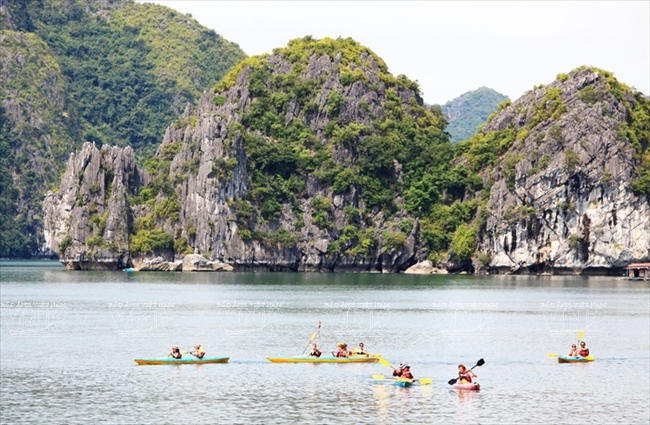 Kayaking to Lan Ha Bay. Photo: Tran Thanh Giang/VNP  Tourists relax in the clear sea. Photo: Tran Thanh Giang/VNP 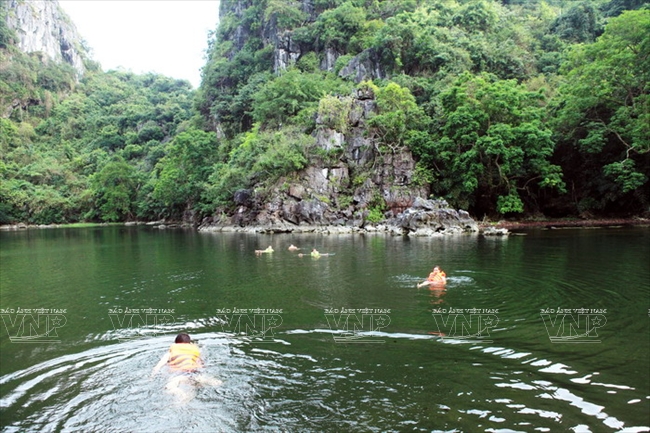 Tourists swim in Thinh Linh Bay. Photo: Tran Thanh Giang/VNP |
“Cat Hai district will call for more investment in developing tourist products and cooperate with the local people in building a friendly tourist culture, all for the goal of making Cat Ba recognised as a world natural heritage”.
(Pham Van Ha, Chairman of Cat Hai District
People’s Committee.) |
Our next stop-over was the Viet Hai ancient village, an eco-tourism spot which has attracted many visitors in recent years. The village has only 90 households who live in the old houses built in a valley and surrounded by mountains and jungles.
The local friendly villagers, who are also tour guides, accompanied us to visit their old houses, showing us how they grow rice and vegetables. We had a feeling we were in an ancient village with the daily activities of the residents living in the northern Red River Delta.
The last leg of our tour was Cat Dua Island, where we understood the reason why it is also called the “Monkey” Island. There, visitors can play or take photos with the friendly, yet very playful, monkeys. On the island, there is a beach with a radius of around 3km, with white and soft sand, stretching far and sloping gently. We walked along the beach to enjoy the sunshine and cool wind, while sometimes picking up some special shells. It was truly a fantastic experience!
We returned to Cai Beo station in late afternoon the same day and went to the Cannon Fortress Relic located 177m above sea level. The fortress was built in 1942 at a strategic gate to the East Sea, which is historical proof of Cat Ba district islanders to be responsible for their task of defending the sea outpost of the homeland.
From the fortress base, we could fully contemplate the wild natural scenery of Cat Ba islands in the afternoon when the golden sun slowly set and could be seen through the mountain tops. The panoramic view of Cat Ba Islands was romantic and picturesque with the fishing boats anchored at the stations, the floating restaurants on the sea and resorts on the mainland brilliantly lit up, like sparkling stars over the sea.
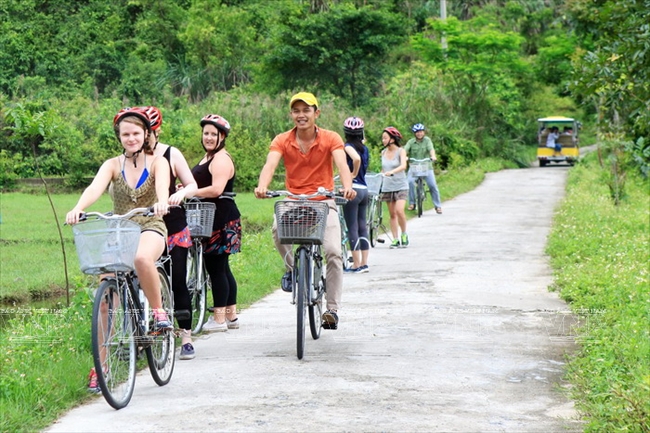 Touring the ancient village of Viet Hai by bicycle. Photo: Tran Thanh Giang/VNP 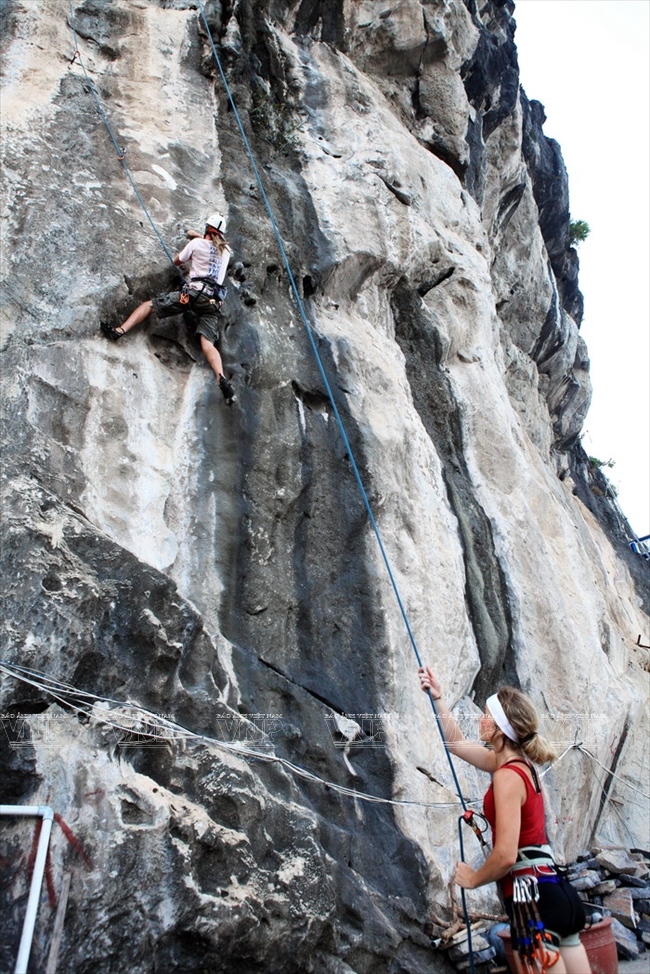 Cat Ba is endowed by nature with limestone ranges, suitable for the development of mountaineering. Photo: Tran Thanh Giang/VNP 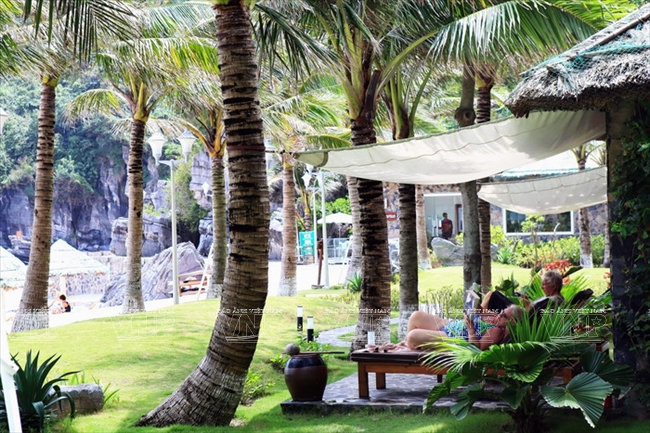 A beach resort with a green space let tourists have a relaxing moment. Photo: Tran Thanh Giang/VNP  A beach resort with a green space let tourists have a relaxing moment. Photo: Tran Thanh Giang/VNP 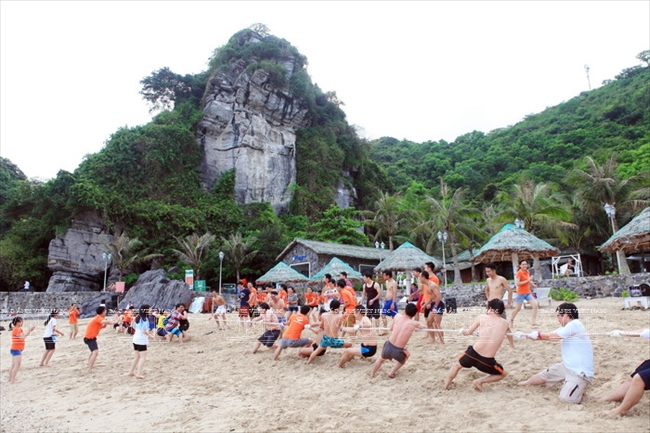 Many sports are done on the clean and smooth white sandy beach in Cat Ba. Photo: Tran Thanh Giang/VNP 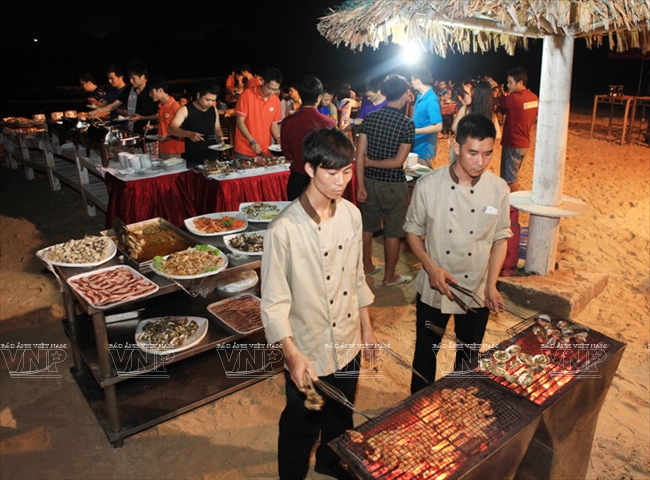 Tourists have an outdoor BBQ buffet on the beach. Photo: Tran Thanh Giang/VNP  A camp fire on the beach. Photo: Tran Thanh Giang/VNP |
|
Currently Cat Ba has 70 restaurants, 8 eco-resorts, 170 hotels and guest houses classified up to the four-star standard; 150 tourist ships, boats and buses to serve tourists. In 2014, there were more than 1.5 million visitors to Cat Ba.
(Statistics from the Cat Hai District People’s Committee)
|
Trinh Quoc Trung, a member of our group who works for the FPT Global Technology Creation Company, said that he enjoyed the first day of the tour so much. “This is the first time I visited Cat Ba Island. I love its beautiful beaches and local delicious sea food. I am looking forward to the second day of our trip to visit Cat Ba National Park where the highly endangered white-head langurs are living,” he said.
Cat Ba National Park, a miracle attraction
The next morning, we took a bus to visit Cat Ba National Park which is at the foot of the curving mountain passes. On the way we could see magnificent, beautiful scenery. When we arrived at the park, under the thick canopy of the jungle with trees of hundreds of years old, we had a feeling of entering a strange bio-diversity world.
The park has many old trees with their big and strong roots, and rare herbal plants. On the ground there are mountain crabs, forest ‘sweet’ snails and geckos. Not only could we explore the park’s rich, diverse fauna and flora, we could also listen to the echoes of the forests with the cries of animals, singing of the birds, and the rustling leaves.
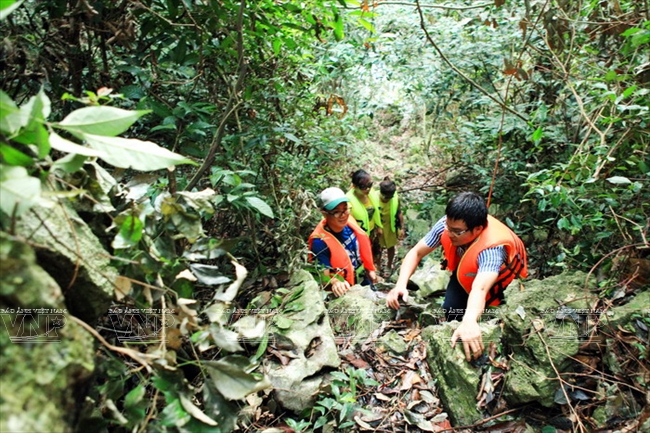 Trekking in a forest in Cat Ba National Park. Photo: Tran Thanh Giang/VNP 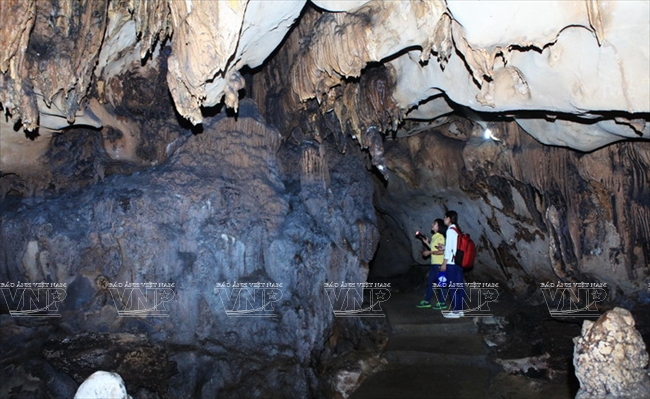 Stalactites of different shapes and colours in Trung Trang Cave. Photo: Tran Thanh Giang/VNP 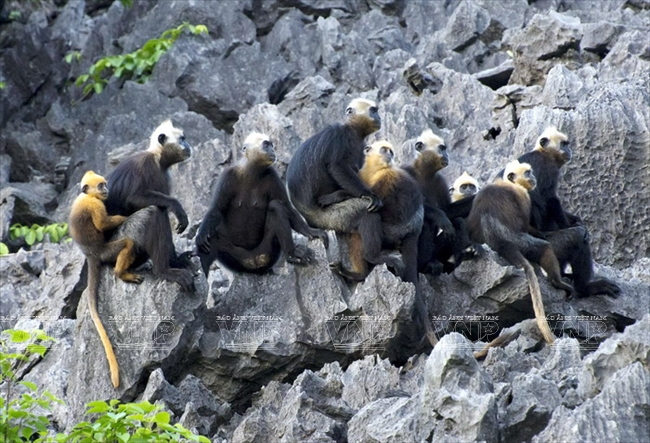 White-headed langurs in Cat Ba National Park are listed in the Vietnamese red book. Photo: Neahga Leonard  Cat Ba Island has diverse floral and fauna. Photo: Tran Thanh Giang/VNP’s files 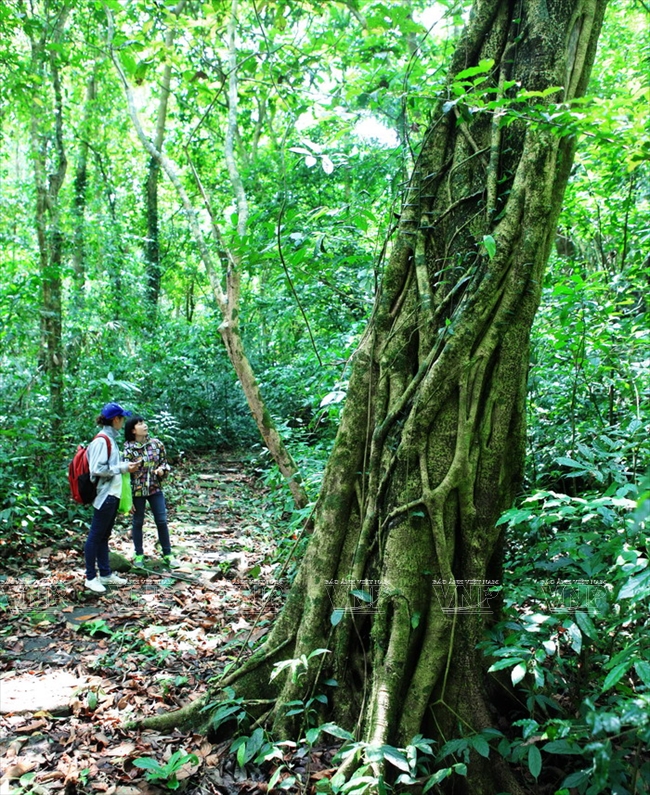 In the forest of Cat Ba National Park. Photo: Tran Thanh Giang/VNP 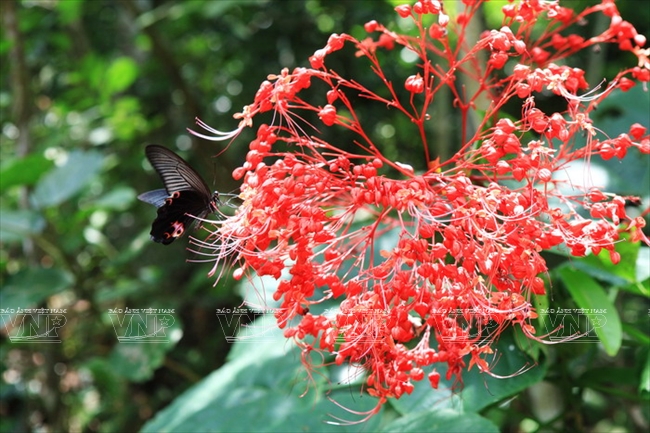 In summer, Cat Ba National Park is colourful with flowers. Photo: Tran Thanh Giang/VNP 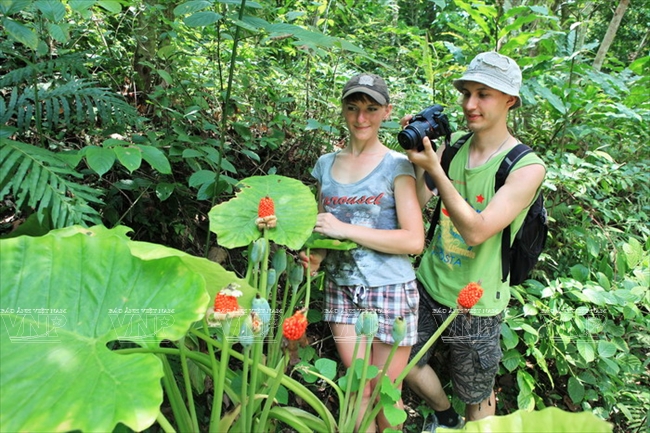 Foreign tourists take photos of the beautiful scenery of Cat Ba National Park. Photo: Tran Thanh Giang/VNP 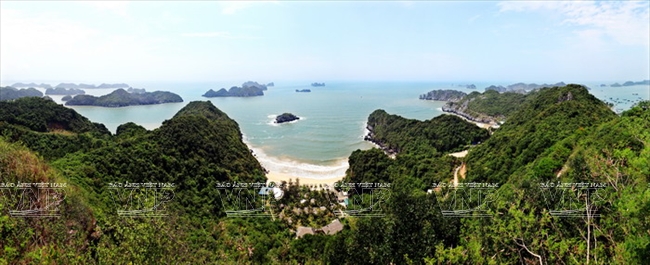 With natural small islets and wild sandy beaches, Cat Ba Island is an attraction for foreign tourists. Photo: Tran Thanh Giang/VNP 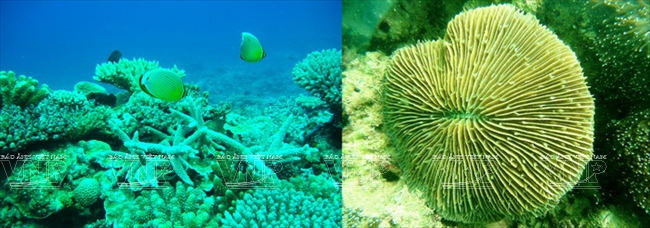 Coral reefs in Cat Ba. Photo: File  Studying coral in Cat Ba. Photo: File |
|
“Cat Ba National Park has a total natural area of 16,198ha with a unique ecological system classified by domestic and foreign experts to have the best bio-diversity value of this kind in Vietnam. Of the total 745 floral species, there are many in the rare and endangered list, including kim giao (nageia fleuryi), copper pod, and palm trees. The fauna is diverse with 282 species, including 20 species of animals, 69 species of birds, 20 species of reptiles and 11 species of amphibians. The park is the sole home to the white-head Langur, named Cat Ba Langur”. (Pham Van Thuong, Deputy Director of Cat Ba National Park). |
On the tour about 2.5km long, we met many foreign tourists who showed great interest in spending time on the rugged, curving spots in Cat Ba National Park. David Butlin, a British tourist, said he loved the natural wild beauty of the mountains, particularly the experience when he climbed to the top of Ngu Lam Mountain, from where he could see the panoramic view of magnificent mountains and forests.
Winding along a narrow lane in the park, the bus took us to Trung Trang Cave. In the dim light from the lamps hung in the cave, however we still contemplated the majestic beauty of the sparkling stalactites, some of which looked like gold and silver pillars described in the tale about the Goddess of Trung Trang Cave. The cave, about 300m long running through a mountain, is naturally formed through thousands of years of geographical tectonics. Inside the cave is truly an eco-world, home to many creatures such as the bats, birds, insects, and reptiles.
It is located close to Ha Long Bay, another UNESCO-recognised Natural Heritage in northern Quang Ninh province, but Cat Ba archipelago has its own unique values in terms of bio-diversity and the combined forest-sea tourism model. If the Tonkin Gulf is said to be a Fairy in the Pacific Ocean, then Cat Ba Archipelago is a chain of jade islands which embellishes that Fairy.
We were told that the leaders of Hai Phong are trying to finalise the necessary procedures to submit them to UNESCO to review the recognition of Cat Ba Archipelago as a world natural heritage in the near future.
Story: Ngan Ha - Photos: Nguyen Thang, Tran Thanh Giang,
Neahga Leonard & Cat Ba National Park’s Files
phamtrangnhung


